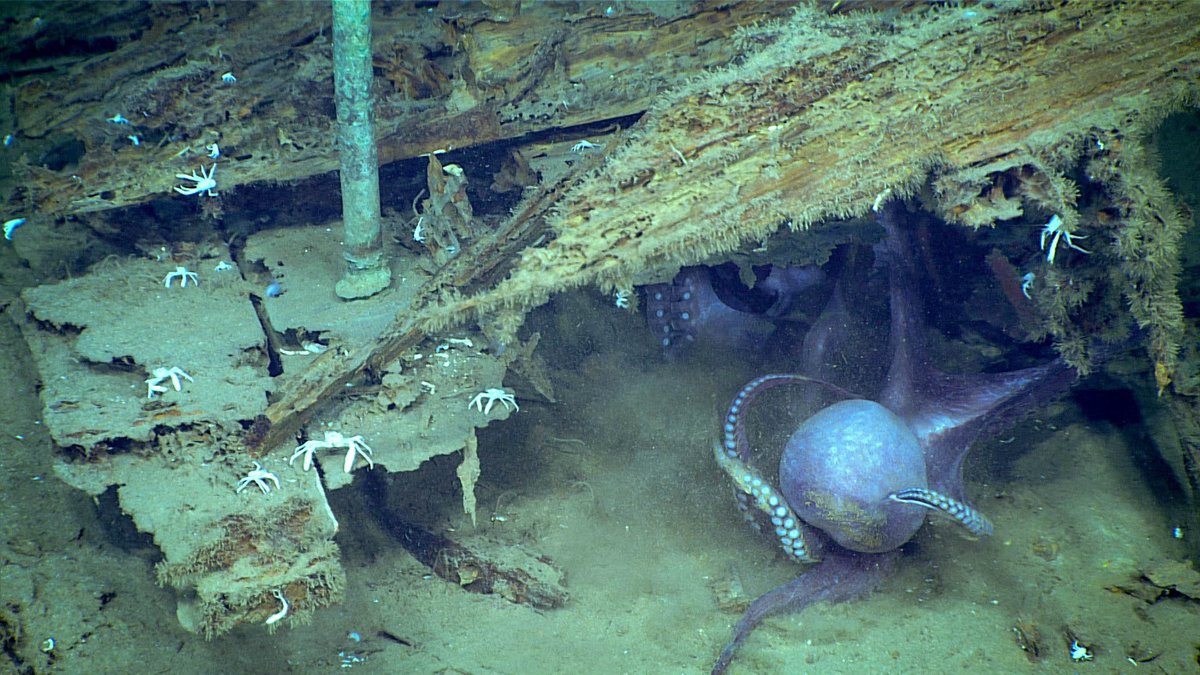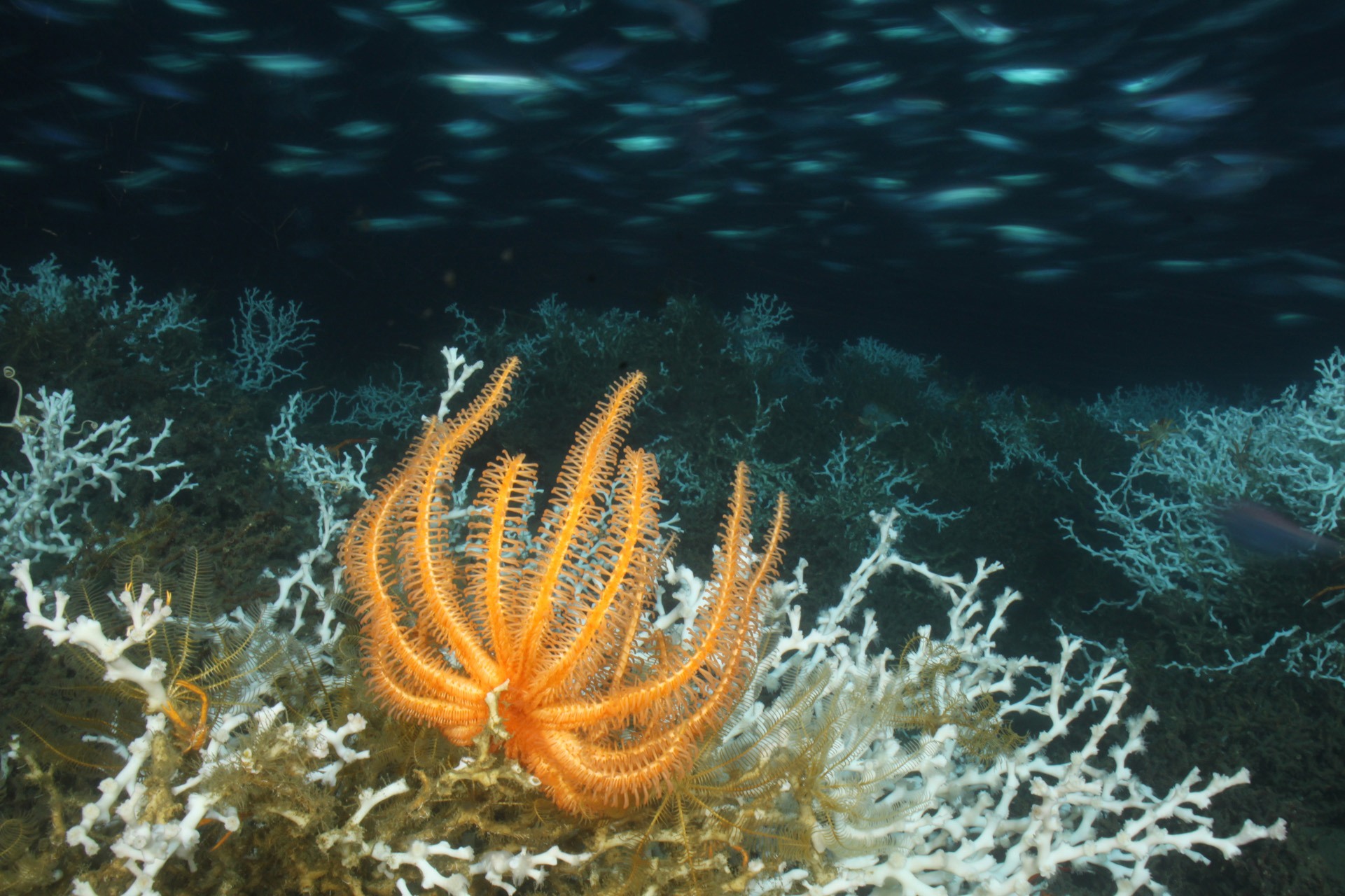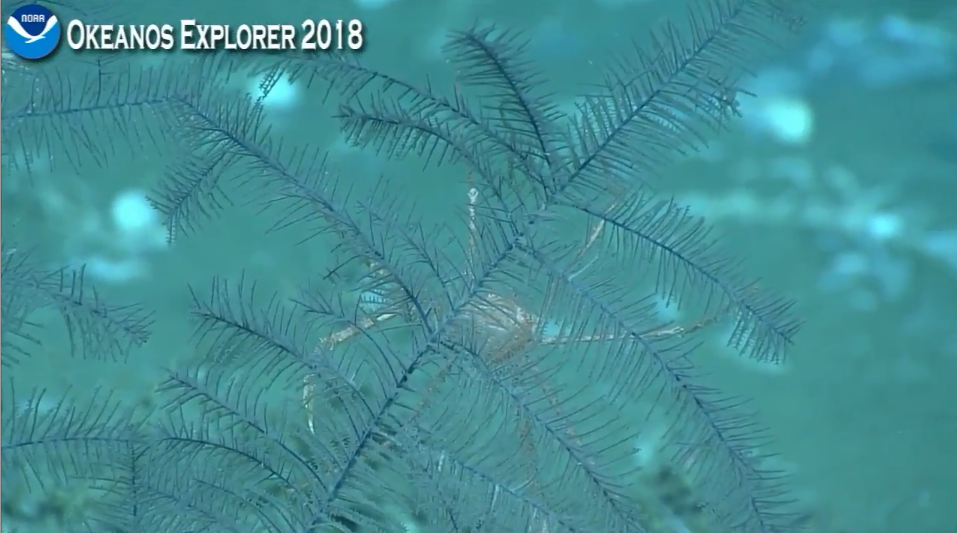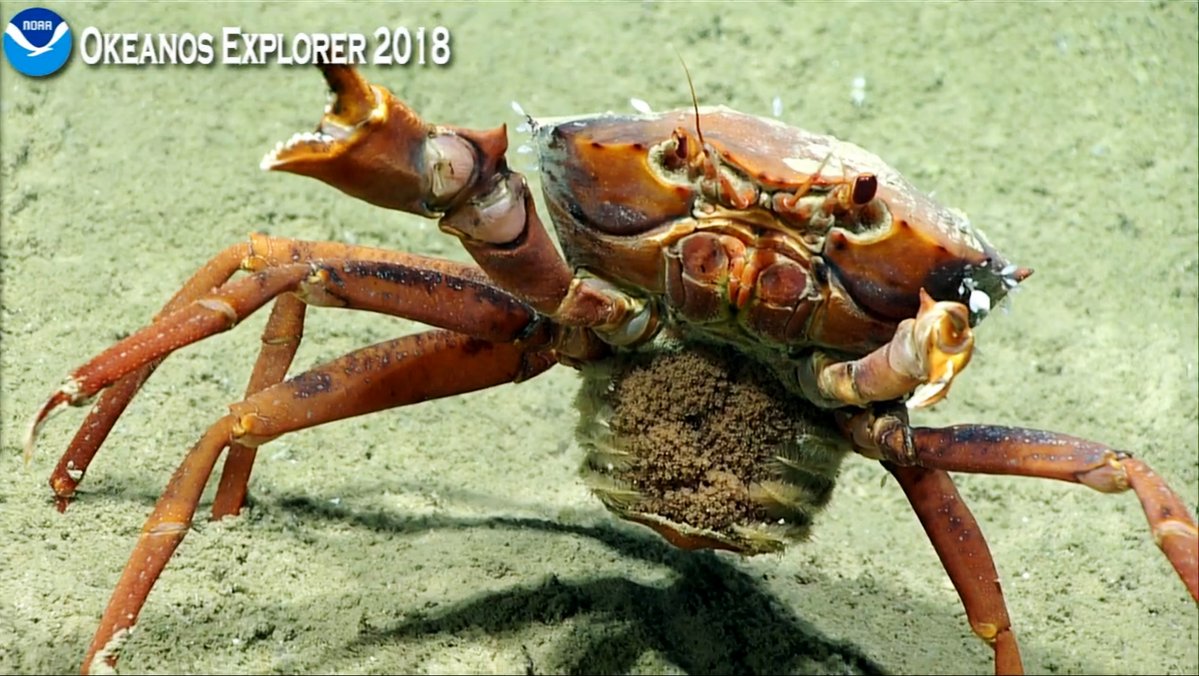Underwater Wonders of Our Ocean
Celebrating amazing marine wildlife in the Gulf of Mexico thanks to Okeanos

Have you been spending time in the deep sea this week? We have! Thanks to the amazing livestream from NOAA’s Okeanos Explorer, we’ve been exploring corals, shipwrecks and much more on the Gulf of Mexico seafloor.
They’ve done so much incredible work already in just the first week of their trip! Just a few sea-riously cool things about the Okeanos expedition include:
- Exploring the unexplored deep sea (always very cool!)
- Watching muse octopuses fighting over territory in a shipwreck (New Hope Tugboat shipwreck, which was also a very well preserved shipwreck)—and one attempting to bury in the sediment
- Spotting a black coral and squat lobster. It is a mutualistic relationship where the coral provides habitat for the squat lobster and the lobster in turn helps to clean the coral.
- On Dive 3 the first thing they saw on the deep sea floor was a plastic bag with sea anemones growing on it. “You can see the impact of humans even in the most remote places”—said by co-science lead Daniel Wagner live during the dive
- Glass sponge
- Finding beaked whale impressions on the deep sea floor (it’s how they feed) but it was hard to get a good image of the depression.
- Dive 4 they observed very unusual behavior by a squid that temporarily stumped the scientists
- Goose fish (not a frog, toad or bat fish, but a goose fish!)
One of the coolest things I’ve seen so far is deep-water corals.

These ancient corals are home to amazing community of curious squat lobsters, mysterious-looking squids and many more species we have yet to identify. Few people ever see these ocean sights firsthand and I can’t be more thrilled to be able to do so thanks to NOAA’s commitment to ocean exploration—this is truly our planet’s final frontier.
The seafloor of the Gulf was ground zero for the BP oil disaster.
Eight years ago this week, the Deepwater Horizon oil rig exploded and sank 5,000 feet to the bottom of the Gulf of Mexico where these ancient corals live. As 60,000 barrels of oil spewed out of the blown-out wellhead every day, it was clear what the impact to the coast was—oiled marshes, birds and beaches were in the headlines for months.
But what was happening underwater? A few months after the well was capped scientists were able to send a remote operated vehicle (ROV) down to the seafloor to discover the heartbreaking impacts the disaster had in the deep sea. In the years following the disaster, research teams estimated 10 million gallons of BP oil still coated the seafloor and reported dying corals covered in a layer of oil-tainted slime. The recovery time for these slow-growing corals, which can live for more than 500 years, is unknown.
The good news is that we are moving towards restoration.
The $20 billion settlement BP paid for its role in the
Deep-sea exploration is expensive, and funding for research and exploration is limited. That’s where the Okeanos Explorer comes in. The ship is currently on an expedition to better understand the deep Gulf. In advance of the expedition, scientists from around the country proposed dive sites for areas they want to know more about, and the NOAA team coordinates the cruise to try and meet the requests. For three straight weeks, this dedicated team sends an ROV thousands of feet down to the seafloor to discover new parts of the ocean, while scientists and the public follow along on the livestream.
Recovery from the BP oil disaster is really only just getting started.
As I write this, state and federal agencies are drafting plans to restore the Gulf’s marine life. Information gathered by ships like the Okeanos Explorer will be part of that effort over the next 15 years and beyond. You can help make sure that these amazing corals are restored from the BP oil disaster—send a message today to the Deepwater Horizon Trustees, urging them to use the funds for the most pressing needs in the deep sea.
Follow the Okeanos Explorer with us now until May 3 as they explore parts of the Gulf of Mexico that few humans have ever seen before!
